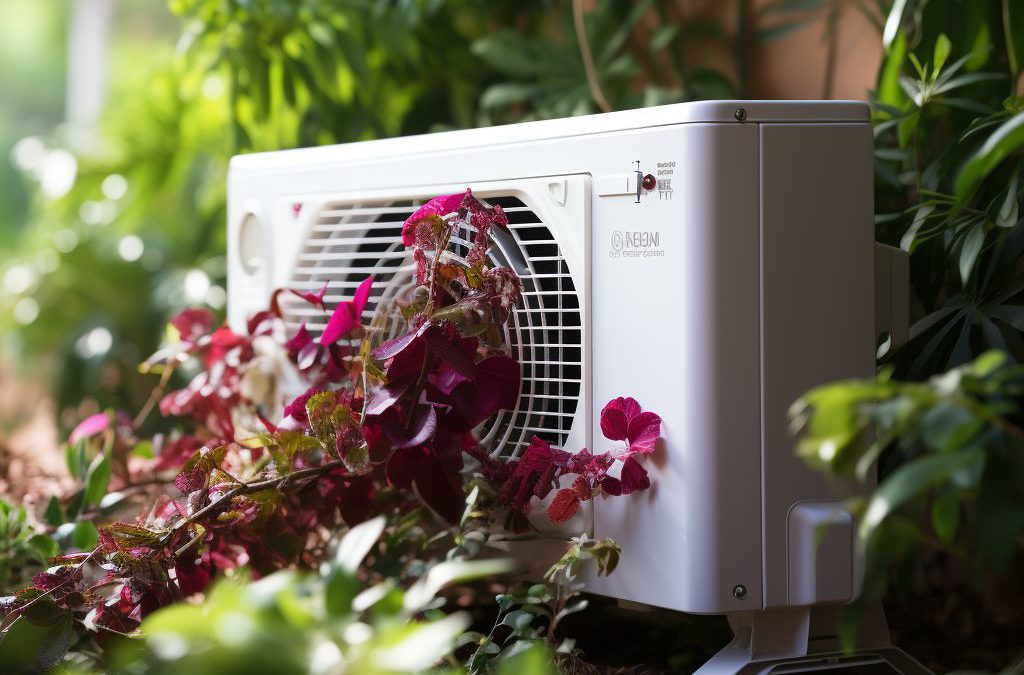When it comes to heating your home during the colder months, one of the primary concerns most people have is the cost of running their heating system. While furnaces have traditionally been the go-to option for many homeowners, heat pumps are gaining popularity due to their energy efficiency. But are heat pumps cheaper to run than furnaces?
In this article, we’ll explore the differences between these two systems and provide you with the information you need to make an informed decision about which type of heating system is best for your home and budget.
Tabe of Contents
- Understanding the Differences Between Heat Pumps and Furnaces
- Factors That Affect Energy Efficiency in Heat Pumps and Furnaces
- Comparing the Initial Installation Costs of Heat Pumps and Furnaces
- Evaluating the Long-Term Maintenance and Repair Costs of Heat Pumps and Furnaces
- Analyzing Energy Bills to Determine Which is Cheaper to Run: Heat Pump or Furnace
- People Also Ask
- Conclusion
Understanding the Differences Between Heat Pumps and Furnaces
Before we delve into which option is cheaper to run, let’s first understand the differences between heat pumps and furnaces. A furnace is a heating system that generates heat by burning natural gas, heating oil, or propane. It then distributes the heat throughout the house through ductwork. On the other hand, a heat pump uses electricity to transfer heat from outdoor air or the ground to warm up a home.
One key difference between the two is that furnaces only provide heating while heat pumps can offer both heating and cooling. This means that homeowners who need both heating and cooling systems would need to have separate systems with a furnace but only one with a heat pump. However, it’s important to note that heat pumps may run less efficiently in extremely cold temperatures, which could require additional heating sources during cold winter months.
Another difference is that while furnaces consume fuel to generate heat, heat pumps only use electricity to move heat. This means that heat pumps are more efficient since they don’t need to generate heat from scratch. Additionally, heat pumps typically have a longer lifespan than furnaces, lasting between 15-20 years compared to a furnace’s 10-15 year lifespan.
Now that we understand the fundamental differences between heat pumps and furnaces, let’s examine the factors that affect their energy efficiency in our next section.
Factors That Affect Energy Efficiency in Heat Pumps and Furnaces
The energy efficiency of a heating system is determined by how well it converts fuel into usable heat. Both heat pumps and furnaces affect energy efficiency in different ways, and understanding those factors is crucial in determining which option is cheaper to run.
Heat Pump Efficiency Factors
One of the main factors that affect the energy efficiency of a heat pump is the outside temperature. As the temperature drops, the heat pump has to work harder to extract heat from the outside air. This can cause a reduction in energy efficiency and lead to higher energy bills. Another notable factor is the insulation of the building. If the building is poorly insulated, then more energy is required to maintain a comfortable temperature, which can lead to increased energy usage and higher costs.
Furnace Efficiency Factors
One of the primary factors affecting the energy efficiency of a furnace is the type of fuel being used. For example, natural gas furnaces are typically more fuel-efficient than oil furnaces. The age and condition of the furnace can also affect energy efficiency. Older furnaces tend to be less efficient, leading to higher energy bills and more frequent repairs.
Overall, several factors affect the energy efficiency of heat pumps and furnaces, making it important to have a professional conduct an energy audit to determine the best heating option for your building. By considering these factors, you can make an informed decision on which heating system to use, depending on your needs and budget.
Comparing the Initial Installation Costs of Heat Pumps and Furnaces
One of the first factors to consider when comparing heat pumps and furnaces is the initial installation cost. While there are many factors that can impact the cost of installation for both types of systems, generally speaking, heat pumps are often more expensive to install than furnaces.
One reason for this is that heat pumps require specialized equipment and expertise for installation. Unlike furnaces, which can use existing ductwork in many cases, heat pumps may require new ductwork and other modifications to the home’s existing HVAC infrastructure. Additionally, heat pumps often require larger outdoor units and more complex electrical connections, which can add to the cost of installation.
However, it’s important to note that the upfront cost of installation is just one piece of the puzzle when it comes to comparing the costs of these two systems over time. Other factors, such as energy efficiency and maintenance costs, can also impact the overall cost of owning and operating a heat pump or furnace.
Key takeaway: While heat pumps may be more expensive to install initially, it’s important to consider long-term costs when evaluating the overall value of these systems compared to furnaces.
Evaluating the Long-Term Maintenance and Repair Costs of Heat Pumps and Furnaces
When it comes to heating your home, the initial installation cost is just one of many factors to consider. Long-term maintenance and repair costs are also important factors to evaluate when choosing between a heat pump and a furnace. Let’s take a closer look at each of these aspects.
Heat Pump Maintenance Costs
Heat pumps require regular maintenance to ensure they are running efficiently. This includes cleaning or replacing filters, checking refrigerant levels, and inspecting outdoor coils. The cost of routine maintenance will vary depending on the size and type of heat pump you have, but on average, it can range from $100 to $300 per year.
If your heat pump requires a repair, the cost will depend on the type and severity of the problem. Minor repairs can cost anywhere from $50 to $200, while major repairs can cost upwards of $1,000.
Furnace Maintenance Costs
Similar to heat pumps, furnaces also require regular maintenance to run efficiently. This includes cleaning or replacing filters and inspecting the blower motor and burner. The cost of routine maintenance will vary depending on the type of furnace you have, but on average, it can range from $100 to $200 per year.
If your furnace requires a repair, the cost will depend on the type and severity of the problem. Minor repairs can cost anywhere from $50 to $200, while major repairs can cost upwards of $1,500.
Overall, the long-term maintenance and repair costs for heat pumps are typically lower than those for furnaces. Heat pumps require less maintenance and have fewer components that can break down. However, it’s important to note that this can vary depending on the specific heat pump or furnace you have, so it’s always a good idea to research and compare the costs before making a decision.
Analyzing Energy Bills to Determine Which is Cheaper to Run: Heat Pump or Furnace
After understanding the differences between heat pumps and furnaces, considering the factors that affect their energy efficiency, comparing their initial installation costs, and evaluating their long-term maintenance and repair costs, the next step is to analyze energy bills to determine which is cheaper to run.
When it comes to energy bills, several factors come into play. First, the price of electricity or natural gas in your area affects your energy costs. Second, the size of your home, the number of occupants, and their energy usage habits contribute to your monthly energy bill. Lastly, the type, age, and efficiency of your HVAC system impact your energy consumption and costs.
To compare the energy consumption and costs of heat pumps and furnaces, you need to look at their SEER (Seasonal Energy Efficiency Ratio) and HSPF (Heating Seasonal Performance Factor) ratings, respectively. The higher the SEER and HSPF ratings, the more energy-efficient the HVAC system is, which translates into lower energy costs.
According to the US Department of Energy, heat pumps are more energy-efficient than furnaces, especially in regions with moderate climates. However, in regions with extreme temperatures, furnaces may be a better option, especially if you have access to affordable natural gas.
In conclusion, analyzing energy bills is essential to determine which is cheaper to run, a heat pump or a furnace. Still, it is crucial to consider all the factors mentioned above and consult with a professional HVAC contractor to make an informed decision.
People Also Ask
What is a heat pump?
A heat pump is an HVAC system that uses electricity to transfer heat from one space to another, either to provide heating or cooling.
How does a heat pump compare to a furnace?
A heat pump is generally more energy-efficient than a furnace because it moves heat rather than generating it. However, the effectiveness of a heat pump may be limited in extremely cold temperatures.
What are the benefits of using a heat pump?
A heat pump can save you money on your energy bills, improve indoor air quality, and decrease your environmental footprint.
What are the drawbacks of using a heat pump?
A heat pump may not be as effective in extremely cold temperatures and can be more expensive to install than a furnace.
Can a heat pump work in any climate?
While a heat pump can work effectively in many climates, it may be less effective in extremely cold temperatures. In these cases, a supplemental heating source may be needed.
Conclusion
In general, a heat pump is often cheaper to run than a furnace due to its energy efficiency. However, its effectiveness may be limited in extremely cold temperatures, and it may be more expensive to install. It is important to consider your climate and heating needs when deciding which system is best for you.

Bobby leads Air Conditioners Contractors with a vision for innovation and excellence in the HVAC industry. With a passion for customer satisfaction and a drive for technological advancement, he ensures the company remains at the forefront of delivering top-tier air conditioning solutions across the USA. His leadership fosters a culture of dedication, expertise, and commitment to exceeding client expectations.

